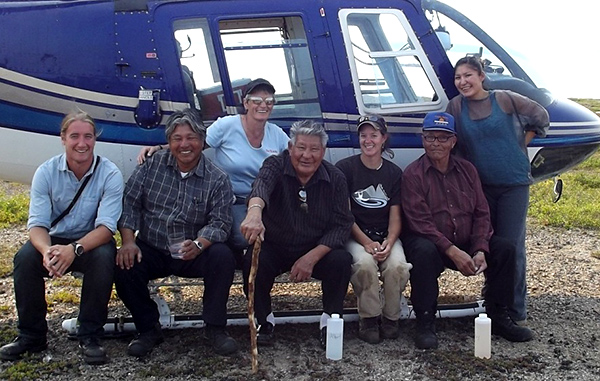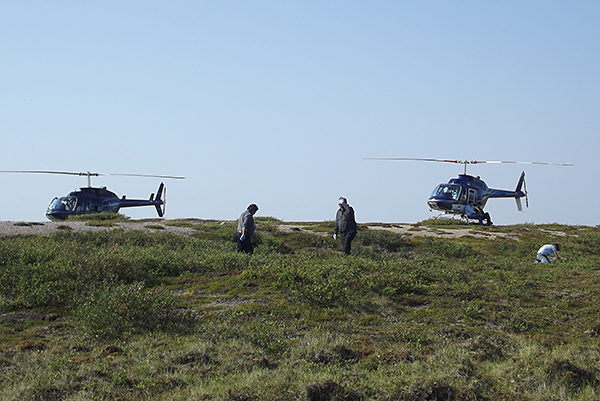The Department of Culture and Lands Protection has a number of ongoing monitoring activities:
The Tłı̨chǫ Aquatic Ecosystem Monitoring Project
This project started in August 2010, as a collaboration between the Tłı̨chǫ Government, the Wek’ èezhı̀ı Land and Water Board, and the Wek’ èezhı̀ı Renewable Resource Board. Tłı̨chǫ community participants and scientists are collecting baseline information on fish, fish habitat, and water quality to compare any changes that may occur in the future, and develop a way to monitor fish that builds on both traditional Tłı̨chǫ Knowledge and science. There have been a series of camps each year in different areas of the region:
- 2010 – Marian Lake
- 2011 – Russell Lake
- 2012 – Snare Lake
- 2013 – Gamètì
- 2014 – Whatì
- 2015 – Russell/Slemon Lake (Behchokǫ̀)
- 2016 – Snare Lake (Wekweètì)
- 2017 – Rae Lakes (Gamètì)
- 2018 – Lac La Martre (Whatì)

Marian Watershed Stewardship Program
The Marian Watershed Monitoring Program is a community-based Aquatic Effects Monitoring Program (AEMP) with specific consideration of the future impacts of the licensed NICO Project and other possible, future developments in the region. The program monitors fish, water, and sediment prior to operation of the proposed NICO mine and will continue data collection in the future in order to monitor cumulative effects of development, land disturbance, and climate change in the Marian Watershed. Both western and Indigenous science will be drawn on to obtain a clear picture of baseline conditions and potential changes over time. Results will contribute to characterization of background conditions and the range of natural variability in water chemistry in the Marian River, which is crucial to implementation of the legal requirement for water on Tłı̨chǫ lands to remain substantially unaltered (per Tłı̨chǫ Agreement and EA0809-004 EA Measures).
The program attempts to answer two key community-based questions: Is the fish safe to eat and the water safe to drink? The main objective of this program is to answer these questions in a meaningful way and facilitate communication of the answers from community members to community members.


